shore excursion Archives – Crown Cruise Vacations
Spooky Shore Excursion: Haunted Doll Safely at Home in Key West Museum
October 17, 2019 | Jackie Sheckler FinchThe large handmade doll sits in a locked plexiglass case at the Fort East Martello Museum in Key West, Florida.
But is the secured case a protection for the one-of-a-kind doll? Or is it for the safety of visitors to this Key West attraction?
After all, this unusual figure dressed in a sailor suit is not an ordinary toy. Known as “Robert the Doll,” the century-old figure is said to be haunted and able to cast spells on those who cross his path.
Shore Excursion: Eating Spanish snack of pintxos in Basque Country
October 3, 2019 | Jackie Sheckler FinchLegend says that pintxos began when an ailing Spanish king was forced to eat small amounts of food with wine to keep up his energy.
Folks thought that was a great idea and soon followed suit.
Since it is not uncommon in Spain to eat dinner very late, pintxos are a tasty appetizer and a chance to wind down and prepare for a leisurely late dinner.
Shore Excursion: Vicksburg man starts bottling Coca-Cola, changes soft drink world
January 10, 2019 | Jackie Sheckler FinchOn a summer day in 1894, however, a young Mississippi candy merchant and soda fountain operator changed all that. Joseph Biedenharn had an idea that quickly changed the soft drink industry.
The Vicksburg businessman put the popular drink in bottles so that people anywhere could enjoy it whenever and wherever they wanted.
“Now people could buy their Coke and take it home,” says Donna, guide at the Biedenharn Coca-Cola Museum in downtown Vicksburg. “They didn’t have to go to a soda fountain anymore when they wanted a Coke. Now Coke is sold all over the world.”
Oh, the things you can learn on a shore excursion from the American Duchess. When the boat docked in Vicksburg, I took the hop-on, hop-off Steamcoach to explore the city.
As a nice perk, the Steamcoach is complimentary for passengers and makes its rounds at stops around town every 15 minutes or so. Another service from the steamboat company is that most shore excursions are included in the cruise price, plus most museums allow cruise passengers to visit free.
Exhibits feature Coke history & memorabilia
Opened in 1975, the Biedenharn Coca-Cola Museum houses a wide variety of exhibits detailing the beginnings of Coke, the history of the Biedenharn family, collection of Coca-Cola advertising, shelves of different Coke bottles and a bunch of Coke memorabilia.
Among the exhibits is a reproduction of the equipment first used to bottle Coke and a restored candy store and office area featuring furnishings and displays of the 1890s. The museum is housed in the actual building where the first bottling took place.
The museum also sells ice cream, candy, fountain Cokes, Coke floats and Coca-Cola souvenirs. An ornate onyx soda fountain adds a beautiful historic touch. “You couldn’t afford to have an onyx soda fountain like this today,” Donna says.
Coke itself was created in 1866 by Dr. John S. Pemberton, a pharmacist in Atlanta, Georgia. He thought it would be nice to have an alternative to bars where people went to drink alcohol. He envisioned drugstore soda fountains as family-friendly gathering places. Coke syrup for the fountain drinks was distributed throughout the South, including Vicksburg.
But Joe Biedenharn noticed that country folks couldn’t get to the soda fountains as easily as townspeople. Why not, he thought, put the soft drink in bottles that could be transported anywhere?
How ‘soda pop’ got its name
At first, the Vicksburg man used whatever bottles he had on hand to bottle Coca-Cola. The early bottles were sealed with a rubber disk that was pushed into the neck of the bottle and held with a wire.
“When you pulled the stopper out of the bottle, it made a popping noise,” Donna says. “That’s where they say the name ‘soda pop’ got started.”
In order to fight imitators and make the Coca-Cola bottle instantly recognizable, the company decided to settle on a unique bottle design. Ben Thomas, one of the original patent bottlers, said that “we need a bottle which a person can recognize as a Coca-Cola bottle when he feels it in the dark.”
The now famous Coca-Cola contour bottle was patented in 1915 by the Root Glass Company of Terre Haute, Indiana. Because of its curvy shape, the bottle was nicknamed the “Mae West” after the voluptuous Hollywood sex symbol.
Photos and article by Jackie Sheckler Finch
Shore Excursion: Harley-Davidson Museum is hog heaven for bikers and non-riders
October 8, 2018 | Jackie Sheckler Finch
Standing beneath a large photograph of his ancestors, Bill Davidson says the business those men built is “a Cinderella story.”
“What they created is a great experience. Our look, our sound, the feel of our motorcycles is recognized around the world,” he says. “We attract people from all walks of life.”
That Davidson last name, of course, is half of the iconic product that is celebrating its 115th birthday this year. The other half of the name is Harley. Harley-Davidson.
“This was a dream by these men who started with nothing but an idea for what they wanted to create,” says Bill Davidson, great-grandson of the company’s co-founder. “If they didn’t have the dream, didn’t have the vison, who knows what might have happened.”
At the Harley-Davidson Museum in Milwaukee, you can almost hear the vroom of powerful motorcycle engines seeming to echo down the highways of time.
The story of those men and the legendary machines they created is told through hundreds of motorcycles and memorabilia. Opened in 2008 in the town where the famous bikes were born, the museum has become one of Milwaukee’s top attractions.
“I could spend days in here,” says Matt Phillips from Chicago. “It’s an amazing story and the museum tells it so well. The museum is the reason we came to Milwaukee, just to see it. It’s hog heaven.”
Building a Dream
The story began in the early 1900s when 21-year-old William S. Harley sketched plans for a motor-bicycle engine. He teamed up with the Davidson brothers – Arthur, Walter and William – to build a functioning motorcycle.
“They did it in a small wooden shed in the Davidson’s backyard here in Milwaukee,” says Kristen Jones, lead curator for the museum.
To show how small that shed was, the museum has an outline of the 10-by-15-foot shed traced on a floor along with the oldest Harley-Davidson in the world. Standing in its glass case, Harley-Davidson Serial No. 1 is said to be the first motorcycle rolled out of that shed in 1903.
“Here we are 115 years later and that dream of my Davidson relatives and Bill Harley is still alive and going strong,” says Bill Davidson, museum vice president.
The first Harley-Davidson motorcycles were made available to the public in 1903. The business survived the Great Depression, World War I and World War II. Before long, that shed was replaced by a much larger building, which is now the present-day site of the company’s headquarters.
Some of the earlier bikes were used to deliver anything from mail to milk. On display also are motorcycles used by police and military units.
The museum also houses the world’s largest collection of unrestored Harley-Davidsons, looking as they did the day they came off the assembly line, plus customized bikes that are more like works of art.
A real dazzler is Russ and Peg Townsend’s rhinestone Harley. Starting with a full-dress Electra-Glide Harley, Russ spent hours putting on red, white and blue rhinestones. I can imagine what it must have looked like rolling down the road in the glittering sunlight.
Although Bill Davidson said it would be difficult to name his favorite bike in the museum, I had no problem picking mine – a 1956 model that 21-year-old Elvis Presley purchased brand new from a Memphis Harley-Davidson dealer shortly after he recorded “Heartbreak Hotel.”
Price $903. Payments $50 a month. On the sales application, Elvis listed his occupation as “self-employed vocalist.” The motorcycle dealership must have figured this young singer might not be the best risk. But they took a chance. Of course, this was before Elvis became known as The King and could buy almost any vehicle he wanted.
‘Tsunami Bike’ recalls 2011 tragedy
One of the most poignant stories is a rusted 2004 Harley-Davidson Night Train motorcycle with Japanese license plates. The bike was found in April 2012 by a beachcomber in Canada.
Peter Mark stumbled upon a large storage container on an isolated beach in British Columbia. Returning to collect his find three weeks later, Peter discovered that the shipping container was gone and the Harley itself was half buried in the sand, corroded by the tide’s ebb and flow.
Harley-Davidson folks were able to track down the bike’s original owner thanks to its still-intact Vehicle Identification Number. The motorcycle had amazingly survived through a more than 4,000-mile journey across the Pacific when it was washed away during the devastating tsunami that struck Japan on March 11, 2011.
Because the contaner was insulated, it was buoyant and floated for more than a year on the current from Japan to the Canadian Coast. Since restoration of the bike would have meant that 99.9 percent of it would need to be replaced, the Harley-Davison company offered to give Japanese owner Ikuo Yokoyama a brand-new bike. He declined, saying he didn’t want to profit from a catastrophe that had cost him and others their loved one and their homes.
Instead, Ikuo Yokoyama requested that the motorcycle be put on permanent display at the museum as a memorial to the tragedy that claimed more than 15,000 lives.
Save time to tour, eat and shop
The 20-acre site also has a restaurant, the Motor Bar & Restaurant, featuring popular items like burgers, chili, barbecue, chicken, ribs and a Wisconsin fish fry every Friday. The restaurant also offers beer, wine and cocktails, including the Easy Rider – seven different liquors with a bit of kick from Jim Beam’s Devil’s Cut Bourbon Whiskey. The Can Room offers snack food and more than 55 different local and national canned craft beers.
Before leaving the museum, most visitors pull out cameras or cellphones in the “Experience Gallery” where visitors are invited to climb aboard a Harley and imagine what it’s like to zoom down the highway.
“We realize that not everyone who comes here is a motorcycle rider. Some people have never been on one,” Bill Davidson says. “When you’re on a motorcycle, there’s the sense of the open road, the freedom, being close to the beauty that we have around us. It’s a true Harley-Davidson adventure.”
For more information: Contact the Harley-Davidson Museum at (877) 436-8738, www.harley-davidson.com
Dr. Jekyll and Mr. Hyde
December 27, 2017 | Jackie Sheckler FinchHaving a great tour guide can certainly make traveling more educational and fun. In this case, it was the red door in Edinburgh, Scotland.
Barbara pointed out that this was where one of my favorite authors, Robert Louis Stevenson, grew up. A sickly child, Stevenson had a family nurse who would lull him to sleep with spooky stories. One of those tales involved a strange man who had constructed a cabinet located in the child’s room.
This weird Edinburgh man, William Brodie, had two lives. In one, he was a respectable craftsman and town council member. In another, he was a criminal – drunkard, gambler and thief. When his double life was discovered, Brodie was hanged on Oct. 1, 1788, in front of a huge crowd.
“Robert Louis Stevenson was haunted by that story,” guide Barbara said. “Stevenson’s book about Dr. Jekyll and Mr. Hyde is said to be based on that true story.”
Along with “Treasure Island” and many other books, Stevenson also wrote one of my favorite quotes:
“I travel not to go anywhere but to simply go.”
Shore excursion: Cuba’s Fusterlandia is one man’s attempt to brighten the world
December 20, 2017 | Jackie Sheckler FinchI had been forewarned but I’m not sure anything can prepare you for Fusterlandia. The artistic wonderland is certainly not something I expected to encounter when I arrived in Havana.
“Some people thought he was crazy,” tour guide Isora said. “People were going hungry when he started doing this. And here he is building houses.”
But Cuban artist José Fuster knew what he was doing. He brought joy to people during difficult times and revitalized a derelict neighborhood at his own expense, in his own time and with his own unusual talents.
The result can’t help but bring smiles and amazed exclamations at all the art work decorating his home and surrounding houses.
“He started in 1992 and now look at it,” Isora said. “People come from all over the world to see this. They say they’ve never seen anything like this before.”
I agree.
Born in 1946 in a small fishing village outside Havana, Fuster is a man of many talents. He sketches, paints, engraves and is an internationally-celebrated ceramist. He also is an outspoken supporter of Fidel Castro and the Revolution and says he is a product of the communist-ruled system which offers free education and free healthcare.
At 14, Fuster went to Castro’s guerrilla army stronghold in the Sierra Meaestra mountains to teach peasants how to read in the country’s Literacy Campaign. He studied at the state-run Art Instructors School from 1963 to 1965 and began working as a ceramist at the Cubanacan Ceramics Workshop in Havana in 1966.
When he moved to his home and studio in the seaside village of Jaimanitas on the northwestern edge of Havana, Fuster started brightening his space with his art work. Before long, he began doing the same for his neighbors. He also helped fund some of their house repairs with his art sales.
In a country where most people are very poor and barely getting by, it is difficult to afford home repairs or decorations. Stretching the food they get from their ration books and figuring out how to get more food is a main concern for many Cubans. So how did art help?
“It made people happy,” Isora. “And proud.”
Fuster has artfully decorated about 50 houses in the neighborhood, Isora said. “This place was very different 25 years ago. José Fuster pays for everything and he works for free. He plans to finish the whole neighborhood.”
No admission is charged to enjoy Fusterlandia. If the artist is in his second-story home or studio, he often will come out and visit. I didn’t get to see him but that doesn’t mean he wasn’t there.
Inspired by nature, Santeria, Picasso and Spanish architect Gaudi, Fuster’s ever-evolving masterpiece requires close looks to catch all the details. It seems as though no space in his kingdom has been ignored.
Even the staircase is decorated with art which can be distracting because I would rather look at the beautiful steps than where I am going. Fuster’s fantasyland is chock full of paintings and playful ceramic figures like mermaids, palm trees, fish, horses, stars, hearts, roosters and crocodiles. A tilted chimney clock is stuck permanently at 3 o’clock.
Political undertones are there as well. Look for the Cuban flags, a huge mural of Fidel Castro’s face and a mural of the Granma boat which transported Fidel Castro, Che Guevara and other Cuban Revolution fighters from Mexico to Cuba in November 1956 to overthrow the American-backed Batista regime.
Even chimney pots have not escaped Fuster’s creativity. Emblazoned across the sky on eight chimney pots are the words “Viva Cuba.”
Shore Excursion: 1950s American cars still cruising in Cuba
December 6, 2017 | Jackie Sheckler FinchA 26-year-old Fidel Castro launched his failed attempt to overthrow Cuban dictator Batista on July 26. The first Corvette went on sale.
And the pink Chevy that I’m settling into for a ride through Havana first took to the streets.
The year was 1953. Almost seven decades later that 1953 Chevrolet is still transporting people around Cuba.
“It runs good but it’s hard to find parts when we have to fix it,” said driver Alex who has had the car for three years. His father owned it for two years before.
Although it has now become a popular tourist photo opportunity, driving classic American cars in Cuba is a necessity in a country that seems stuck in a time warp. Everywhere you look is a veritable moving car museum of old-school American brand vehicles used as Cuban taxis and everyday transport.
Though Cuba is less than 90 miles from Key West, Florida, the country has dealt with a feud that late leader Fidel Castro waged against America and vice versa.
In the 1950s under American-backed dictator Batista, Cuba was a playground for the rich and famous – including the mafia. Lots of American muscle cars, mostly General Motors models, were imported but Castro quickly put a stop to the casinos and the American imports.
“Before the revolution, the mafia owned these casinos,” Alex said, gesturing to large buildings that now serve other purposes. “After the revolution, there were no casinos.”
For more than half a century, American economic sanctions made new vehicles virtually unobtainable in Cuba. That meant no American vehicles and no American car parts.
The result, said tour guide Ricardo, is Cuban mechanics who are magicians. “We have ingenious mechanics who keep our cars running,” he said.
From the looks of some of them, many of these classic car bodies are held together with duct tape, wire and many layers of paint. The Chevy in which I’m touring Havana is missing a radio, odometer and cigarette lighter. In their places are empty spaces. A dashboard clock is permanently stuck at 9:40 o’clock.
“The car used to be blue,” Alex said. “I painted it pink.”
An estimated 60,000 pre-1959 American cars are still cruising Cuban streets. About 150,000 existed at the time of the 1959 revolution when all American manufacturers were forced to stop selling their wares in Cuba.
Every so often on my visit we would spot one of the oldies by the side of the road with its hood up. No AAA to call when a car breaks down in Cuba. Many are fixed with improvised parts right where they broke down.
Watching the old Dodges, Chryslers, Fords and Chevrolets roar down the road, I did notice an unusual motor sound. The reason, Alex said, is because many original motors were swapped for diesel engines. Diesel fuel is much cheaper than gasoline in Cuba.
Many men with cars are taxi drivers. They pay a fee to the government for a taxi license and pay part of the wages they earn to the government. Men lucky enough to own more than one car will often rent it to a driver or, if they are tired of driving, they will let another man drive their car and share the profits. So far, I haven’t seen any women taxi drivers.
Most Cubans work for the government at monthly salaries of about $20. Taking a taxi ride in one of the Cuban classic cars costs about $30 to $50 an hour for tourists and most Americans are happy to pay that, plus add a generous tip.
It would be sad to see the makeshift oldies disappear. They look like rolling works of art, a distinct part of Cuba.
Shore Excursion: Skimpy costumes, beautiful showgirls & guys at Tropicana in Cuba
November 22, 2017 | Jackie Sheckler FinchNow I have, too, on a late-night excursion from my Celestyal Crystal cruise. The optional four-hour activity cost $149 for adults. Children under 18 not allowed.
That price includes a glass of sparkling wine, one-fourth of a bottle of Cuban rum, bottle of Coke for mixer, bucket of ice and some nut snacks. That’s a lot of rum and two people at my table of four didn’t drink rum. When the show was over, I saw quite a few folks carrying unopened or partly full bottles of rum out with them.
We left the ship after dinner at about 9 p.m. for the short ride to the cabaret by excursion bus. The huge nightclub was already filling up when we arrived but our tables were reserved so no need to hurry.
I had heard about the Tropicana for years but was surprised to see it is an outdoor theater. In case of bad weather, the show is moved inside but I doubt if it would have been quite as spectacular as it was under the stars.
Sort of an in-the-round theater, it has a big stage in front with smaller stages on both sides. Plus the performers often parade through the audience so the result is like surround sound. Sometimes it was hard to know where to look because so much was going on.
Dress code for the audience is long trousers and closed shoes for men, “elegant” clothes for women. Photos and videos are allowed but we were warned up front that it would cost $5 to take photos and $15 to take videos.
That “extra” photo price is one I have encountered several times in Cuba – $5 to take photos inside the Marti mausoleum at the Santiago cemetery (photos of Fidel Castro’s grave and elsewhere were free) and $5 to take photos inside Castillo del Morro fort. But I have never seen anyone enforce that rule at any of those places nor at the Tropicana.
The Tropicana cabaret opened in 1939 and is a huge spectacle. Before the revolution, the Tropicana also was a casino owned by the mafia. The nightclub was featured in a scene in the “Godfather II” movie.
Castro kicked out the mafia and closed the casinos, strip clubs and brothels but the traditional cabarets survived. They were shut briefly in 1968 but popular support had them reopened as part of the Cuban sense of identity and cultural history.
Did you ever watch the “I Love Lucy” TV show and see her real-life husband Desi Arnaz perform as Ricky Ricardo with his Cuban band on a cabaret show like the Tropicana?
Arnaz was born in Santiago de Cuba where his family was wealthy and politically influential. However, when Batista came to power, Arnaz’s father was imprisoned and his property was confiscated. When the family secured his release after six months, the family fled to Miami.
Desi Arnaz went on to become a popular band leader and TV producer. He was deeply patriotic about the United States and wrote in his memoir that he knew of no other country in the world where “a 16-year-old kid, broke and unable to speak the language” could have the incredible successes that he had.
Our Tropicana show had plenty of beautiful people of both genders. Plus plenty of bare butts of both genders. Huge song and dance acts along with some acrobatic performances filled out about 20 acts. The show has more than 200 performers and sometimes it seemed as though they were all on the stages at the same time.
Skimpy outfits. Feathers. Sequins. Towering headdresses that must require great strength for the women to wear. Those lighted chandelier headdresses were incredible and somehow the showgirls were able to walk down stairs and through the audience wearing them.
Songs were sung in Spanish, of course. Someone described Tropicana as Vegas on steroids and that sounds about right.
The show ended at 12:30 a.m. and we got back to the ship a little after 1. Sleeping in the next day was not an option. Because of Cuba’s lack of infrastructure, anyone who wanted to visit Havana the next day had to be off the ship by 6:15 a.m. because the Celestyal Crystal had to move out so another ship could dock.
The Crystal would be anchored away from the dock until about 9 p.m. tomorrow night so nobody could embark or disembark the vessel. An inconvenience and a long tiresome day for sure.
But would I want to miss seeing the Tropicana or losing my day in Havana? No way. I can sleep at home.
Shore excursion: Saying hello to Dolly at National Museum of Scotland
November 1, 2017 | Jackie Sheckler FinchAt the National Museum of Scotland, I saw the famous animal that captured my imagination. The museum itself – all Scottish museums have free admission – could well take a day to tour. It is huge and well organized.
Some of its treasures include a specimen of penicillin inscribed by Scotsman creator Alexander Fleming; the world’s oldest surviving color TV using a system invented in 1936 by Scottish engineer John Logie Baird; and a “humane” beheading machine named the Maiden. Between 1564 and 1710, when the Maiden was withdrawn from use, more than 150 people were executed with the device.
Ironically, the person believed to have introduced the idea to Scotland for a beheading machine was himself executed on June 2, 1581, by the Maiden. James Douglas, who ruled Scotland from 1572 to 1578, was implicated in the murder of Mary, Queen of Scots’ second husband, Lord Darnley. For that, he lost his head.
Among the many treasures at the museum, the one that seems to attract the most visitors is a stuffed sheep named Dolly, after Dolly Parton naturally. Permanently twirling in her glass case, Dolly is the world’s first mammal cloned by Scottish researchers from an adult cell.
Born July 5, 1996, Dolly died at age six from a lung infection and severe arthritis. The legacy of the world’s most famous sheep has not been the cloning of animals but in advances into stem cell research that may be used in fighting cancer and other diseases.
Seeing Dolly brought back memories of discussions about human cloning when her birth was announced. I feel the same way now as I did back then. If offered the chance to have myself cloned, would I be interested? Nope.
Shore excursion: Visiting historic Footdee fishing village
October 25, 2017 | Jackie Sheckler FinchToday, it is mostly inhabited by people who want to get away from the hustle and bustle of the city.
“Footdee is a little hidden gem in Aberdeen,” said local tour guide Darryl.
Footdee was founded centuries ago at the mouth of the River Dee. The area has had a settlement as far back as medieval times but the current village was built in the mid-19th century and designed by John Smith, the architect responsible for Balmoral Castle.
In the past, Darryl said, fishwives would sit outside the cottages repairing nets while having a good gossip. The nets would make a colorful patchwork quilt spread on the grass to dry.
“The fisherfolk each had a hut and a patch of land and a shed,” Darryl said. “Some fisherfolks still live here today but fishing has declined in the North Sea so Footdee is not just for fishing families anymore.”
One of the newer residents is talented artist Shelagh Swanson. She lives in one of the historic houses and has her studio across the lane in a lovely shed. A fulltime artist specializing in painting and glass, Shelagh opened her Footdee studio earlier this year.
A farmer’s daughter, Shelagh broke the family farming tradition when she discovered her talents in glass, ceramics and painting.
In front of her studio, Shelagh is creating a decorative mural with “found” sea glass. Other people help gather the smoothed glass tossed ashore by the sea and Shelagh is turning it into a beautiful ocean scene.
Shelagh also created an artistic anchor sculpture erected by the nearby Silver Darling restaurant. The anchor project celebrates this year’s 20th anniversary of The Friends of Anchor, a group that raises money for local cancer research.
Shelagh’s anchor design features a female figure and was inspired by the area’s shipbuilding heritage. Shelagh named her anchor Grace.
“I named it after Grace Darling who was famous for rescuing people from a shipwreck,” Shelagh said.
Grace Horseley Darling was a lighthouse keeper’s daughter who risked her life to rescue nine survivors from the wrecked SS Forfarshire on Sept. 7, 1838.
The artistic anchor project features 20 anchor sculptures decorated by local artists. The anchors will be on display in Northeast Scotland until they are sold in a fund-raising auction.
Walking through this village out of time, we saw creatively decorated houses, sheds and gardens. In one, a pair of skis permanently stuck in the ground has a stepping stone proclaiming that “Just when I got my head together, my body fell apart.”
Another plaque notes that the house was built in the 1800s. “Probably haunted,” the sign says. “Sleep tight.”
Acknowledging the village’s past, the houses and gardens display model boats, seashells, ships in bottles, lighthouses, mermaids, sea critters and other fishing mementoes. It didn’t take long to walk through the whole quirky village but it was well worth the relaxing stroll.


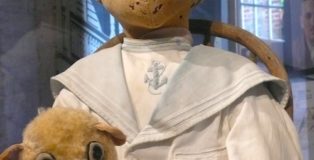
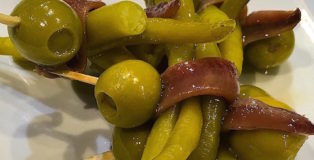
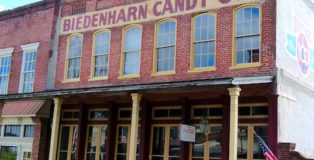
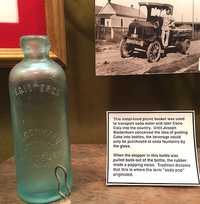
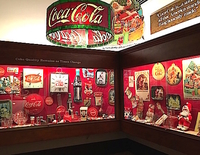
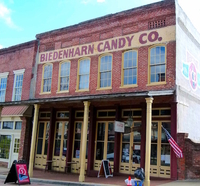
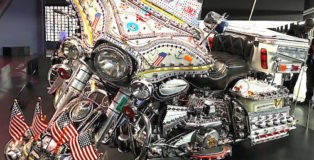
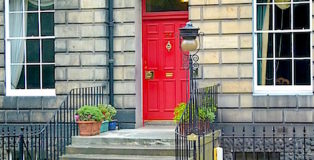
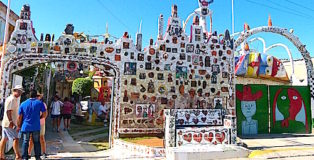
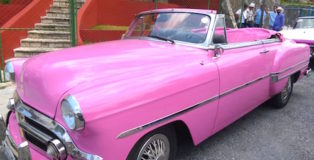
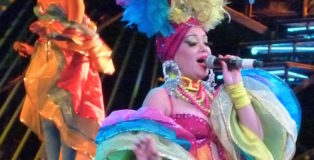
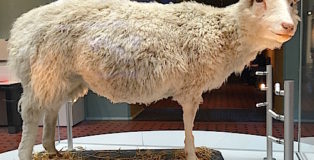
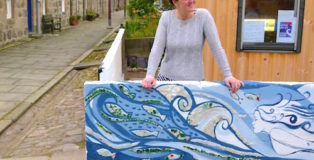












View Recent Comments